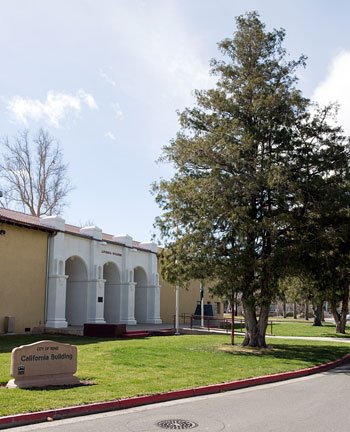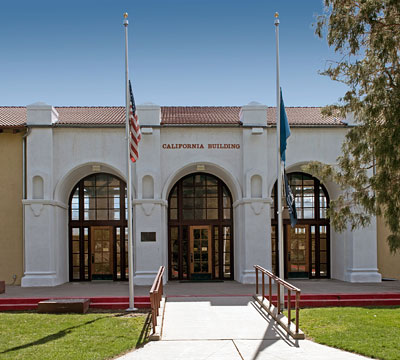National Register of Historic Places in Washoe County
California Building
1000 Cowan Drive in Idlewild Park
Reno
Built 1927
Reno built Idlewild Park and the California Building for the 1927 Transcontinental Highway Exposition. The exposition celebrated the first transcontinental highway in the United States, the Lincoln Highway which ran from Times Square in New York City to Lincoln Park in San Francisco.
The building was named the California Building because most of the exhibitors were from California, not Nevada.
The California Building is one of the few remaining examples in Northern Nevada of the Mission Revival architectural style. Along with the original Reno arch, it is the only surviving structure created for the exposition. Four other exposition buildings were demolished over the years.
After the exposition, an American Legion post occupied the building for eleven years before deeding it to the City of Reno for use as a public facility.
Source: Adapted from the NRHP Nomination Form submitted in 1992.

The Lincoln Highway
The Lincoln Highway, conceived in 1912 and formally dedicated October 31, 1913, was the first road to cross the United States. It ran from Times Square in New York City to Lincoln Park in San Francisco passing through thirteen states: New York, New Jersey, Pennsylvania, Ohio, Indiana, Illinois, Iowa, Nebraska, Colorado, Wyoming, Utah, Nevada, and California.
In 1925, the US Bureau of Public Roads eliminated named trails and highways, and Lincoln Highway became drab series of numbers: US 1, US 30, US 40, US 50.
One of the last actions of the Lincoln Highway Association before it closed, was to order the casting of 3,000 concrete markers, to dedicate the highway to the memory of Abraham Lincoln. A rectangular head on top of a hexagonal shaped post, the markers featured the Lincoln Highway logo, a bronze medallion and arrows to indicate the route of the memorial highway. The US Bureau of Public Roads allowed the placement of these markers along the length of the old highway.
According to the 1916 edition of the Lincoln Highway Association Official Road Guide, a trip from the Atlantic to the Pacific was "something of a sporting proposition" and might take twenty to thirty days. Motorists were advised to top off their gasoline at every opportunity and to wade through water before driving through to verify the depth. Recommended equipment included chains, a shovel, an axe, jacks, tire casings, inner tubes and sundry tools. Firearms were not necessary, but west of Omaha full camping equipment was recommended.
Source: Lincoln Highway Association and others.


